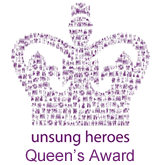Epidermolysis Bullosa causes patients skin to blister easily, children with it are often referred to as butterfly children as their skin is as delicate as a butterflies.
There are different type but the recessive forms of EB tend to be more severe. Onset is usually at birth or soon afterwards with missing skin. In some cases, nearly all skin surfaces and mucous membranes (from mouth to anus) are covered by blisters. Large areas may be devoid of skin. There is widespread scarring and deformity. Fingers and toes may become immobile. With recurrent scarring, fingers and/or toes may fuse together. Hands and arms may become fixed in a flexed position with resulting contractors. There is usually loss of the nails of the fingers and toes. Teeth may be malformed and delayed in appearing through the gums. Because routine dental care can raise blisters, many persons with RDEB have a higher than normal incidence of cavities. Blistering on the mucosal surfaces often cause scarring within the mouth and gastrointestinal tract. The ingestion of food may be limited due to microstomia (inability to fully open mouth due to scarring and contractors of the perioral region), painful swallowing, difficulty chewing, (due to poor dentition) oesophageal webbing. In many cases chronic malnutrition, growth retardation and anaemia may ensue. Involvement of the eyes can include eyelid inflammation with adhesions to the eyeball, as well as inflammation of the cornea or the mucous membrane covering the eyeball and the underside of the lids.
Post Pals © 2025
Charity Number: 1137175

